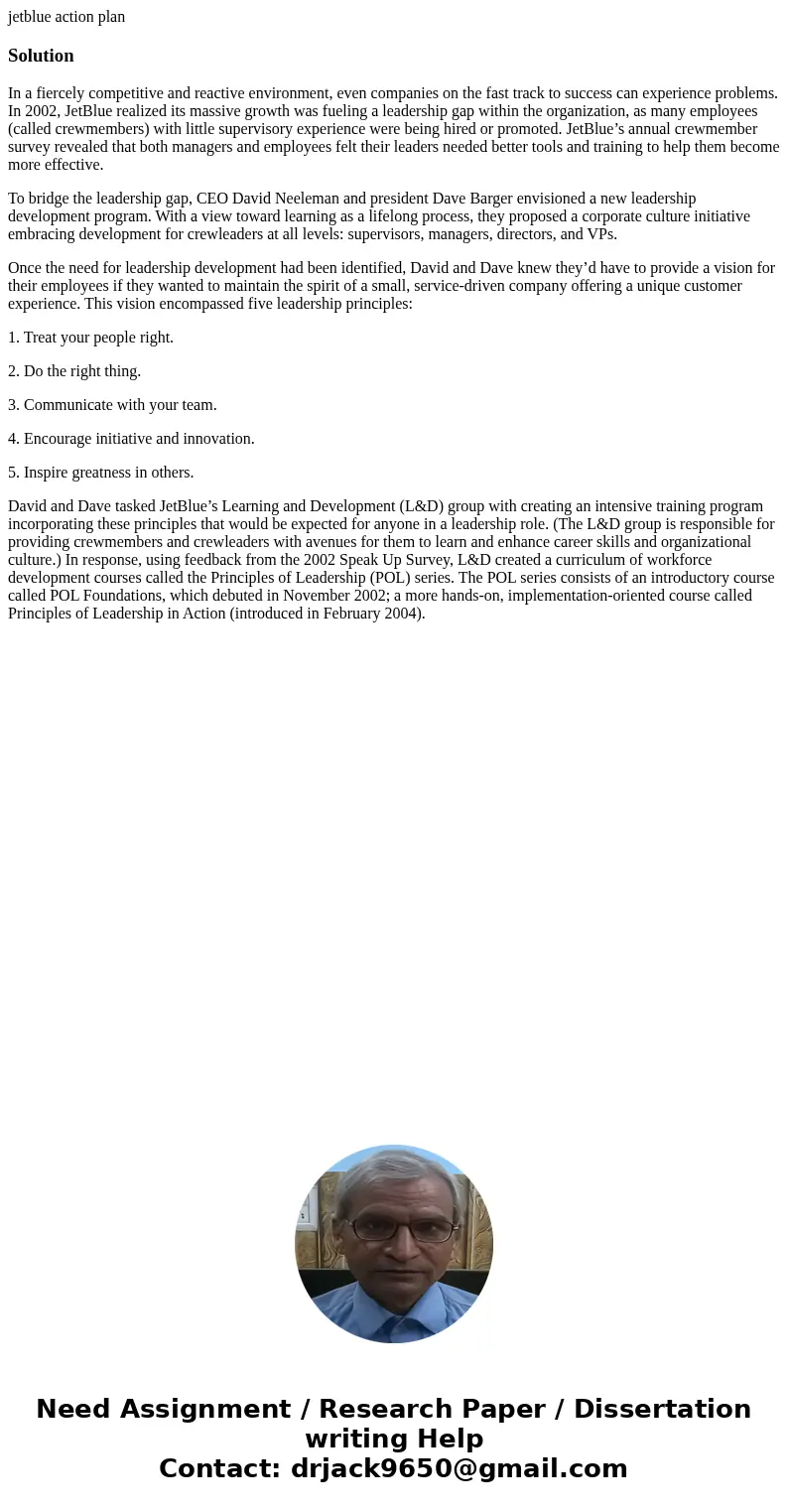jetblue action planSolutionIn a fiercely competitive and rea
jetblue action plan
Solution
In a fiercely competitive and reactive environment, even companies on the fast track to success can experience problems. In 2002, JetBlue realized its massive growth was fueling a leadership gap within the organization, as many employees (called crewmembers) with little supervisory experience were being hired or promoted. JetBlue’s annual crewmember survey revealed that both managers and employees felt their leaders needed better tools and training to help them become more effective.
To bridge the leadership gap, CEO David Neeleman and president Dave Barger envisioned a new leadership development program. With a view toward learning as a lifelong process, they proposed a corporate culture initiative embracing development for crewleaders at all levels: supervisors, managers, directors, and VPs.
Once the need for leadership development had been identified, David and Dave knew they’d have to provide a vision for their employees if they wanted to maintain the spirit of a small, service-driven company offering a unique customer experience. This vision encompassed five leadership principles:
1. Treat your people right.
2. Do the right thing.
3. Communicate with your team.
4. Encourage initiative and innovation.
5. Inspire greatness in others.
David and Dave tasked JetBlue’s Learning and Development (L&D) group with creating an intensive training program incorporating these principles that would be expected for anyone in a leadership role. (The L&D group is responsible for providing crewmembers and crewleaders with avenues for them to learn and enhance career skills and organizational culture.) In response, using feedback from the 2002 Speak Up Survey, L&D created a curriculum of workforce development courses called the Principles of Leadership (POL) series. The POL series consists of an introductory course called POL Foundations, which debuted in November 2002; a more hands-on, implementation-oriented course called Principles of Leadership in Action (introduced in February 2004).

 Homework Sourse
Homework Sourse